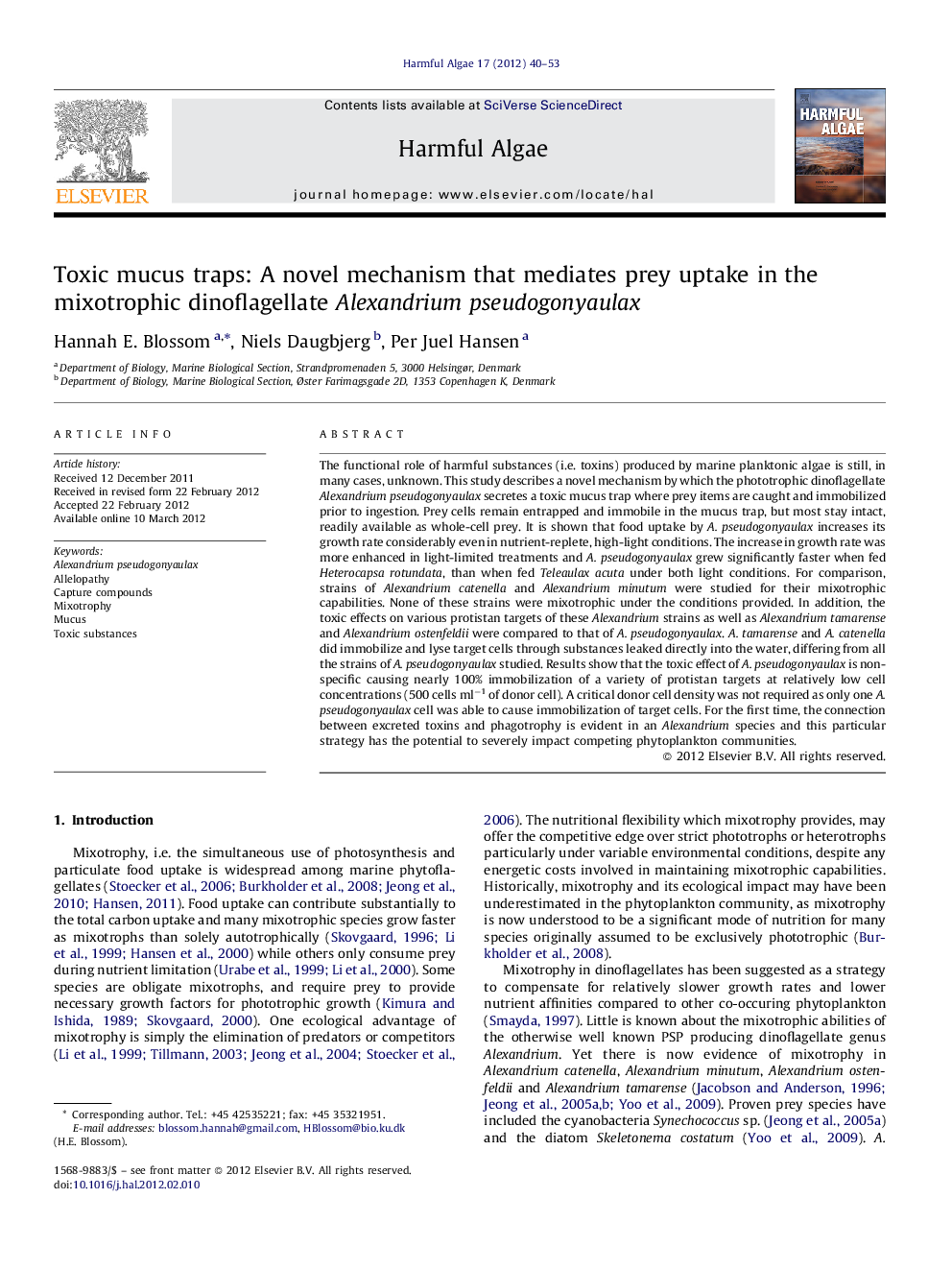| Article ID | Journal | Published Year | Pages | File Type |
|---|---|---|---|---|
| 4545549 | Harmful Algae | 2012 | 14 Pages |
The functional role of harmful substances (i.e. toxins) produced by marine planktonic algae is still, in many cases, unknown. This study describes a novel mechanism by which the phototrophic dinoflagellate Alexandrium pseudogonyaulax secretes a toxic mucus trap where prey items are caught and immobilized prior to ingestion. Prey cells remain entrapped and immobile in the mucus trap, but most stay intact, readily available as whole-cell prey. It is shown that food uptake by A. pseudogonyaulax increases its growth rate considerably even in nutrient-replete, high-light conditions. The increase in growth rate was more enhanced in light-limited treatments and A. pseudogonyaulax grew significantly faster when fed Heterocapsa rotundata, than when fed Teleaulax acuta under both light conditions. For comparison, strains of Alexandrium catenella and Alexandrium minutum were studied for their mixotrophic capabilities. None of these strains were mixotrophic under the conditions provided. In addition, the toxic effects on various protistan targets of these Alexandrium strains as well as Alexandrium tamarense and Alexandrium ostenfeldii were compared to that of A. pseudogonyaulax. A. tamarense and A. catenella did immobilize and lyse target cells through substances leaked directly into the water, differing from all the strains of A. pseudogonyaulax studied. Results show that the toxic effect of A. pseudogonyaulax is non-specific causing nearly 100% immobilization of a variety of protistan targets at relatively low cell concentrations (500 cells ml−1 of donor cell). A critical donor cell density was not required as only one A. pseudogonyaulax cell was able to cause immobilization of target cells. For the first time, the connection between excreted toxins and phagotrophy is evident in an Alexandrium species and this particular strategy has the potential to severely impact competing phytoplankton communities.
► Alexandrium pseudogonyaulax is mixotrophic. ► Maximum growth rates of A. pseudogonyaulax were with mixotrophic nutrition. ► Mucus traps and toxic substances are used to immobilize prey prior to ingestion. ► Toxic substances released are non-specific and lack a critical cell density.
